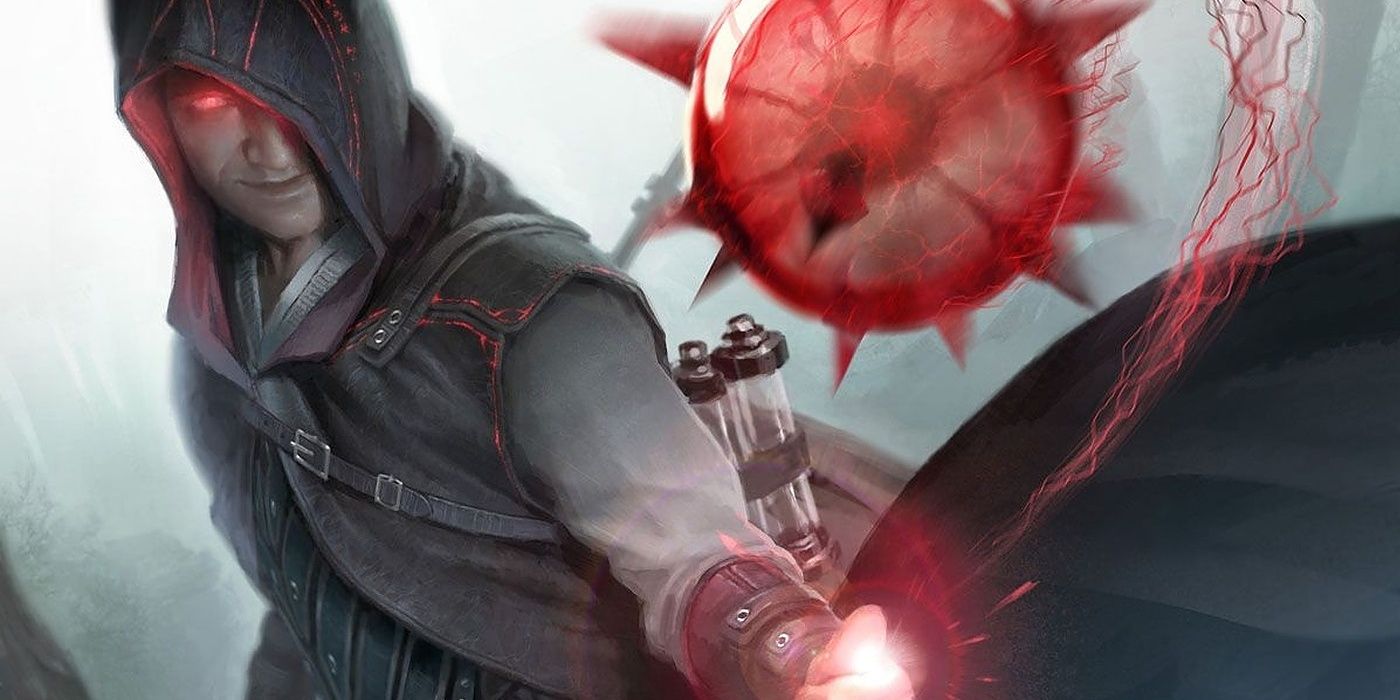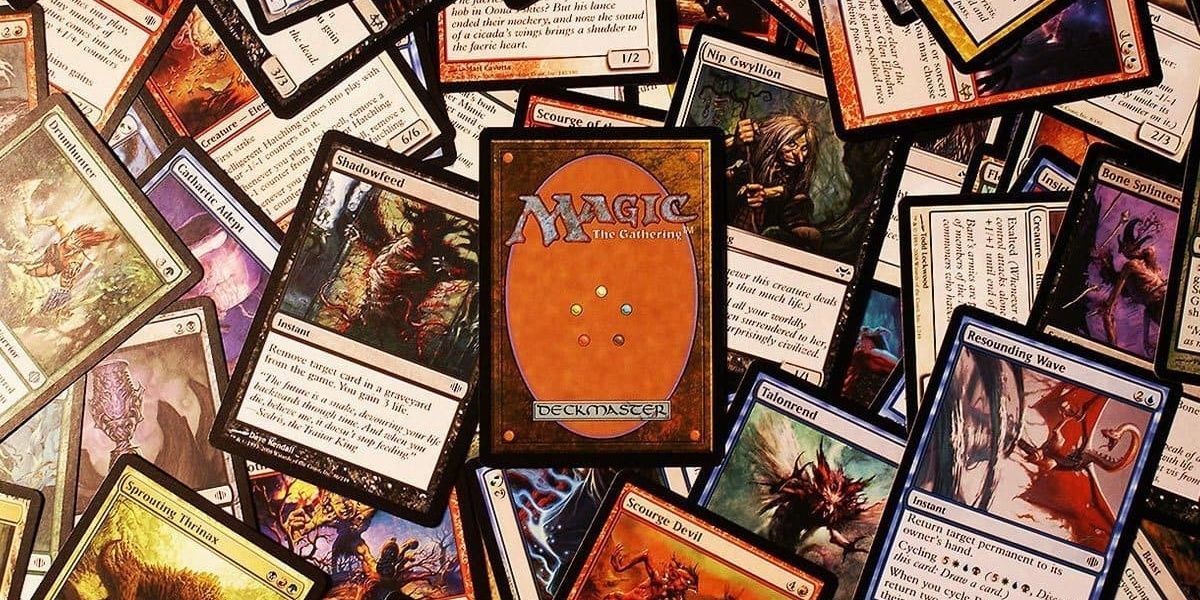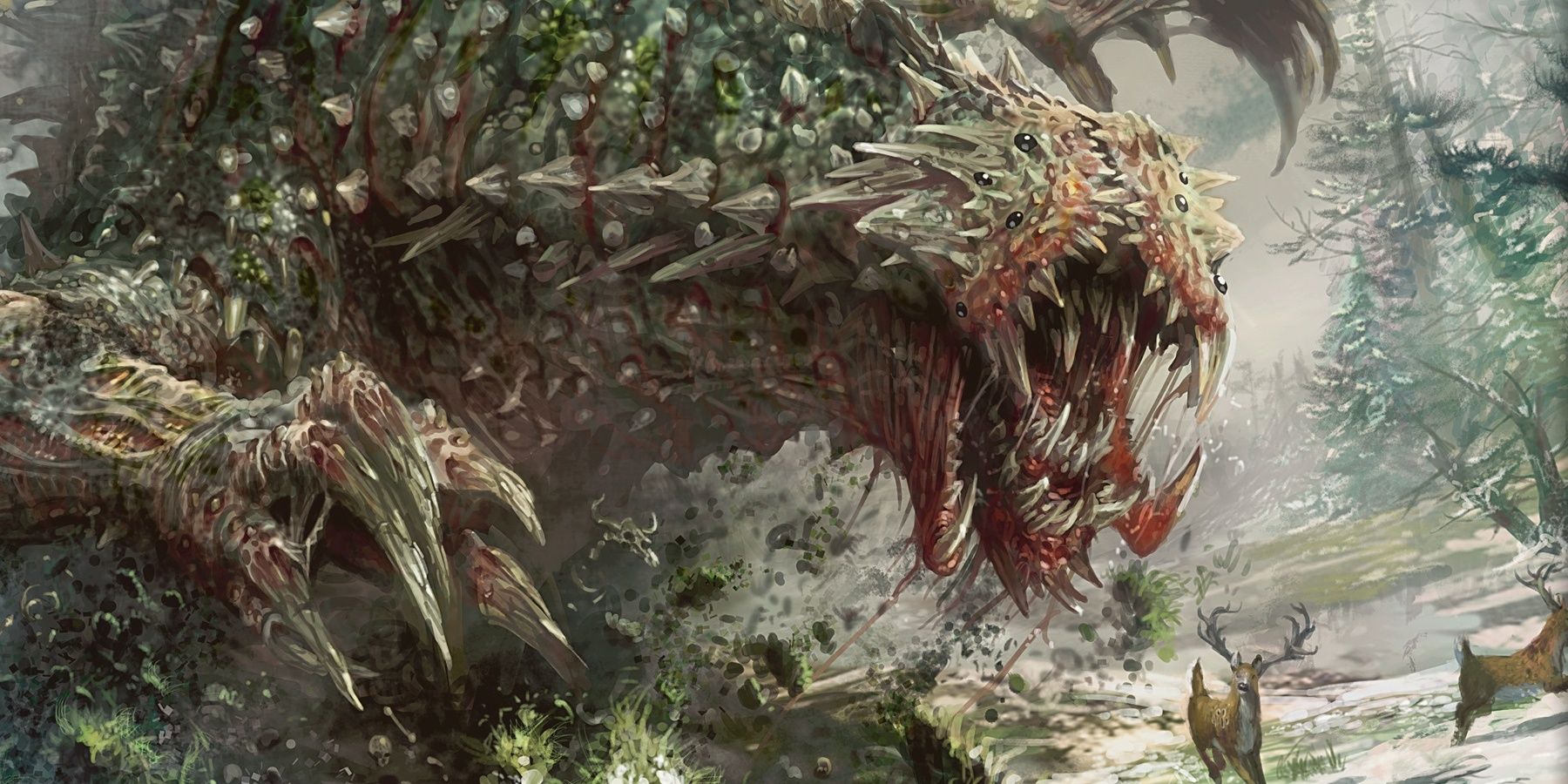Sometimes, Magic: The Gathering can almost feel like several games combined into one, a sentiment some team members of Wizards of the Coast's have echoed. The Standard, draft and casual play formats are all great starting points for new players, and once a player is ready for the next level, they can try out the Modern format.
The Modern format is more intense and competitive than Standard, and newcomers will soon realize that themselves. This might be a bit intimidating at first, but practice makes perfect, and novice Modern players can note several trends, tricks and strategies to give themselves a fighting chance in this format. Modern can be brutal, but it's also a lot of fun, and there are more than a few handholds to grab onto.
The Official & Unofficial Rules of Modern Cards
All cards that use the modern-style card frame, as opposed to the early game's rustic card frames, are candidates for Modern decks. In particular, cards from the 8th edition Core Set and the original Mirrodin block onwards are within the Modern format, spanning from 2003 to the present day. Sets and blocks don't rotate out of Modern; instead, it keeps growing as time passes. The format is even bigger now than when it first launched in 2011. There is a banned list of Modern cards, but otherwise, everything from Mirrodin and onwards is fair game. Supplemental products, such as Commander decks, do not add cards to Modern unless those cards were already there, while Modern Masters only features reprints of Modern-legal cards. The exception is Modern Horizons, which printed brand-new cards that were Modern-legal as soon as that product came out.
Only a tiny fraction of legal Modern cards end up in modern decks, thanks to the Modern format's high standards for playable cards. An entire 250-card set could only contribute four or five to the format, if not fewer. In Modern, players have many choices when it comes to counterspells, burn spells, big creatures, mana fixing and more, so a lot of "worse than" cards are weeded out fast. For example, many lands can do what the shocklands do, but not as well, so they are never played. And there are countless artifact creatures, but the likes of Arcbound Ravager, Signal Pest and Etched Champion make nearly all of them obsolete.
What qualifications should a Modern card have? This format calls for cards that have a CMC, or converted mana cost, of 3 or lower. Even an intrinsically slow deck, such as a midrange deck or a control deck, will want low-cost spells to cast from turn 1 onwards. Cards that cost 4-5 mana should be powerful enough to dominate the board, and cards with CMC of 6+ seldom see play unless they are cheated in somehow, such as a quick reanimation combo or a tutor effect (or the notorious Tron deck).
In addition, good Modern cards will have the meta in mind, whether they end up in the mainboard or the 15-card sideboard. Modern decks often deal with graveyard synergy, casting lots of non-creature spells in one turn, going wide, using powerful activated abilities, or using one- or two-drop spells, so a good Modern card will "expect" the opposition to play that way. That may sound abstract, but once a new Modern player familiarizes themselves with Modern's typical decks and cards, they'll choose their own cards to suit the meta. In fact, cards that are great for the Modern meta are awkward to use in Standard or kitchen table Magic, and vice versa.
Many Modern decks can create a game-winning scenario in remarkably little time, even if they aren't an aggro deck. The WotC-endorsed rule of Modern is that any Modern deck that faces no opposition can either win the game or create an absolutely dominant board state by turn four, known as the turn-four rule. Any combo deck can win by turn four if the opponent isn't putting up any resistance, and burn and aggro decks can win by then, too. A Standard or casual player getting into Modern will realize that they're on the verge of winning or losing even within the first four turns; in short, a game can go from 0 to 60 with astonishing speed.
Understanding The Modern Meta: Decks, Cards & Archetypes
Nearly all formats of Magic: the Gathering have established decks or archetypes, from booster draft Limited to Modern, Legacy and beyond. Modern has one of the richest metas of all, boasting many decks of different color combinations and archetypes, from control decks to tricky combo decks and durable midrange decks.
Aggro decks may take a few different forms, such as the Naya Zoo deck, using red, green and white creatures to beat the opponent down with incredibly efficient threats. In this deck, the likes of Wild Nacatl, Kird Ape, Goblin Guide and Steppe Lynx, along with Lighting Bolt and Atarka's Command push extra damage. Then there's the Merfolk deck, a mono-blue aggro deck with the cheap Aether Vial to play extra Merfolk without paying mana. Burn is also a popular do-or-die deck, using efficient red spells and creatures such as Monastery Lightspear, Lightning Bolt or Searing Blaze to vaporize the opponent up front. Affinity is also a time-honored aggro deck, using artifact synergy and efficient stats to push damage and cast spells with astonishing speed upfront.
Combo decks are the ones that may take new players by surprise the most often. Such decks can win on turn four if their combo goes off, such as dealing lethal damage with spells or creating infinite tokens or infinite life loss. The Ad Nauseam deck is a good example of this, casting Angel's Grace to prevent losing the game due to life loss or damage. The player casts the card Ad Nauseam to draw their entire deck, and cast the spell Lightning Storm, discarding countless land to fuel it. Lightning Storm may then deal game-winning damage to the opponent, and if the player can't interfere with the combo, they're toast.
Control decks include Esper Control and Jeskai Control, and midrange decks include the famous Jund deck. Tempo decks such as Grixis Delver can trip up the opponent, and the Death's Shadow deck is a sort of Voltron aggro deck that bets everything on losing life while pumping up the namesake Death's Shadow creature.
New players may soon learn the names and uses of notorious cards and combos and prepare accordingly. After a point, a Modern player can determine what sort of deck they are facing within two to three turns of play, and get a rough estimate of which cards they will face. For example, Affinity will give itself away on turn one with Glimmervoid as the land drop, then Memnite, Mox Opal, and Signal Pest, then tapping the Mox Opal and paying 2 life for Vault Skirge. That's five cards on turn one, and cards such as Cranial Plating, Steel Overseer and Arcbound Ravager are practically guaranteed to follow up soon. Against Tron decks, a player can expect to see Expedition Map, Sylvan Scrying, Chromatic Star and Ancient Stirring, followed by Karn Liberated or Wurmcoil Engine.
All this makes it easier for a new Modern player to customize their mainboard and sideboard in anticipation of such cards. Pithing Needle can really hurt Tron and Affinity, along with Stony Silence with white mana. A deck can mainboard one or two Spell Snare to hit staple cards like Sylvan Scrying, Tarmogoyf, Cranial Plating and Terminate, or artifact hate can come in such as Ancient Grudge, or Ceremonious Rejection may come into play.
Anti-graveyard cards such as Leyline of the Void, Grafdigger's Cage, Dryad Militant and Rest in Peace are also a good call, usually against Dredge, Storm or Living End. Over time, a new Modern player can get used to their local meta, and fine-tune their mainboard and sideboard even more. If there's a lot of Tron and burn around, but not much combo or Dredge, then Rest in Peace might get taken out in favor of Blood Moon against Tron or Kor Firewalker and/or Spellskite against burn decks.



